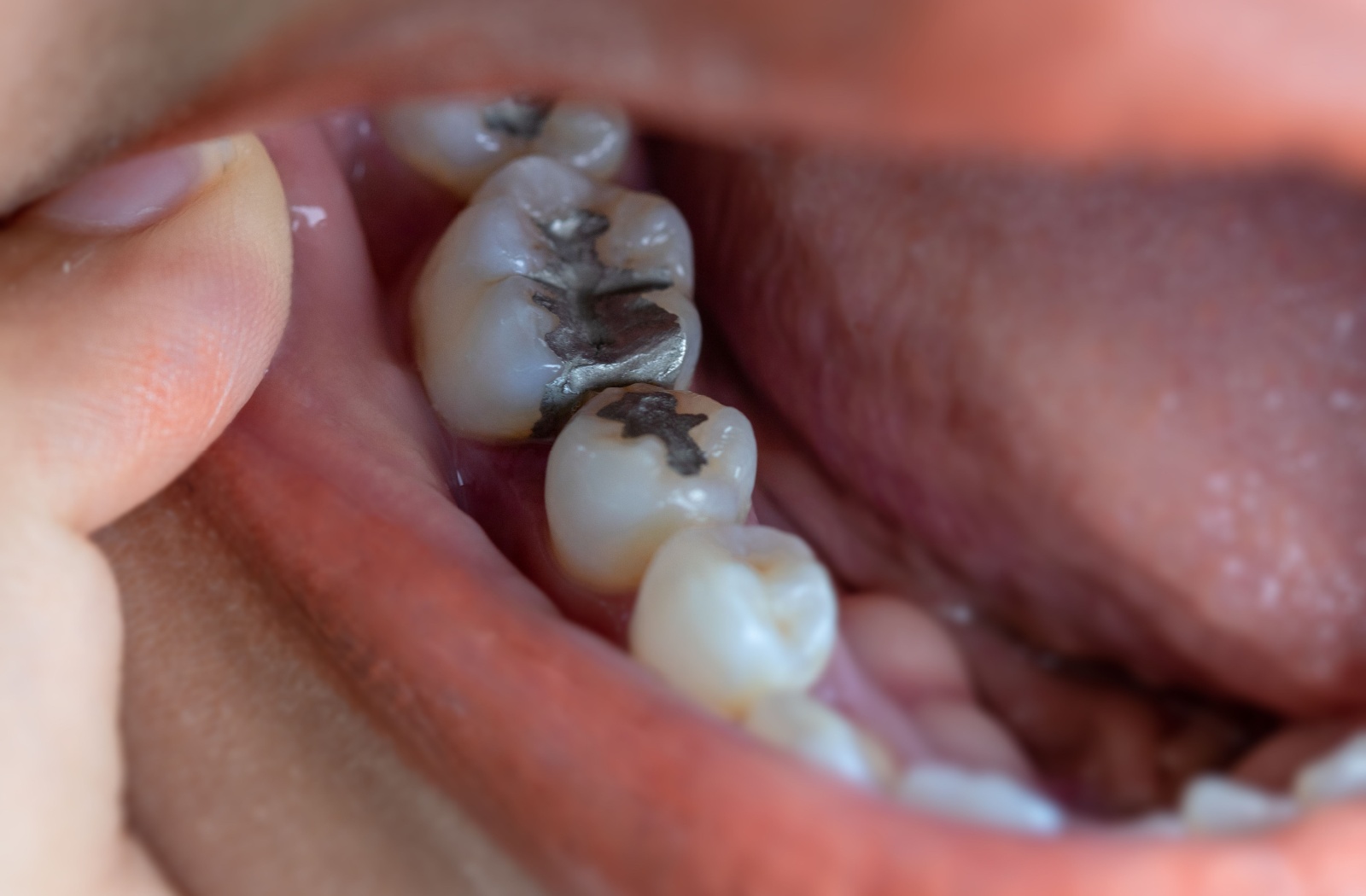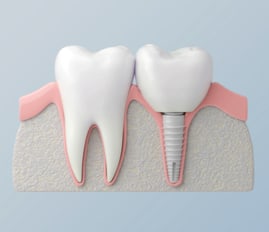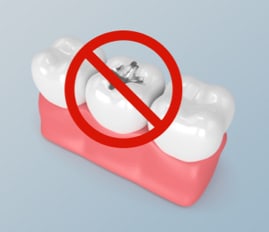If you’ve been to the dentist at any point, you’ve likely heard about amalgam fillings. You may even have one yourself. But what exactly are they, and why do people still talk about them? They are made of an amalgamation of various metals, including mercury and silver. Whether you’re considering a filling or have concerns about existing ones, we want to equip you with the knowledge you need to make informed decisions about your dental health.
What’s an Amalgam Filling Made Of?
Dental amalgam, often referred to as a “silver filling,” is a filling material used to restore teeth damaged by decay. While their silver colour is distinctive, the term “silver filling” can be misleading—they’re not made entirely of silver.
Amalgam fillings are a combination of metals, including:
- Mercury (about 50% of the mixture): Used to bind the metals together, creating a durable material.
- Silver (∼25%): Contributes strength and anti-corrosion properties.
- Tin (∼14%): Helps improve workability and durability.
- Copper (∼8%): Enhances strength and reduces corrosion.
- Trace amounts of other metals, such as zinc, are also often present.
This blend has been used in dentistry for over 150 years due to its affordability, durability, and ability to withstand the pressures of chewing.
However, mercury—a key component—has become the subject of much scrutiny in recent years, after research suggests that it’s dangerous to our health.
Types of Fillings
While amalgam fillings have unfortunately been a popular choice since the 19th century, other options have gained traction in modern dentistry due to advancements in materials and changing patient needs. Here’s an overview of the main types of fillings available today:
| Filling Type | Pros | Cons |
| Amalgam Fillings | Durable, often lasting 10-15 years or longer. Cost-effective compared to other filling materials. | Contain mercury, which raises health and environmental concerns. Their silver colour is less aesthetically pleasing. |
| Composite Fillings | Tooth-colored, offering a natural look. Bond directly to teeth, providing additional strength. | Not as long-lasting as amalgam fillings (typically 5-10 years). More expensive than amalgam. |
| Ceramic Fillings | Made from porcelain, highly resistant to staining. Provide a natural and aesthetically pleasing appearance. | More expensive. May require a larger portion of the tooth to be removed. |
| Gold Fillings | Extremely durable (lasting 20+ years). Biocompatible and non-corrosive. | Expensive. Requires multiple dentist visits for placement. |
Each type of filling has its own set of benefits and drawbacks, depending on durability, cost, aesthetics, and health concerns.
The Ban on Mercury in the European Union
The European Union (EU) has taken significant steps to limit the use of mercury in dental fillings due to its impact on human health and the environment. Since July 2018, amalgam fillings have been banned for children under 15, pregnant women, and breastfeeding mothers. These restrictions reflect growing concern about mercury exposure.
The EU’s regulations aim to gradually reduce mercury’s use in dentistry, favouring safer and more sustainable alternatives like composite or ceramic fillings.
Harmful Effects of Mercury
While the mercury in amalgam fillings is chemically bound and considered stable, there are still health concerns, especially as some mercury vapour is released during everyday activities like chewing or grinding teeth. Over long periods, high exposure could have negative effects.
Potential Risks Include:
- Neurological Concerns: Chronic exposure in high amounts may lead to issues like tremors, memory loss, or mood changes.
- Kidney Function: Elevated mercury levels have been linked to kidney damage.
- Environmental Impact: Improper disposal of mercury-based dental waste can affect ecosystems, impacting wildlife and water supplies.
The World Health Organization (WHO) recommends minimizing mercury use wherever possible due to potential side effects.
Ensure Your Dentist Follows Protocols to Safely Remove Amalgam Fillings
Removing amalgam fillings improperly can release more mercury vapour than leaving them in place. At Health First Dental, we stay on top of the latest techniques developed by the International Academy of Oral Medicine and Toxicology to safely remove mercury amalgam fillings. These techniques are used to minimize the harmful effects of mercury vapour and provide as much protection as possible to the patient, the dentist, and the dental personnel.
Making Well-Informed Choices About Your Dental Health
When it comes to amalgam fillings, understanding the facts about their materials, benefits, risks, and alternatives is key to making the right decisions for your dental and overall health. While amalgam fillings have been used in dentistry for decades, advancements in dental technology now offer more aesthetic and safer solutions that aren’t detrimental to your health.
At Health First Dental, we recommend amalgam fillings to be safely removed whenever possible. Our expert team can recommend various safe removal techniques.
If you have any concerns about your existing fillings or would like to explore modern, safer options, don’t hesitate to contact Health First Dental. Our compassionate team is here to guide you through every step of your dental wellness journey. Together, we can ensure your smile stays healthy and radiant for years to come!












